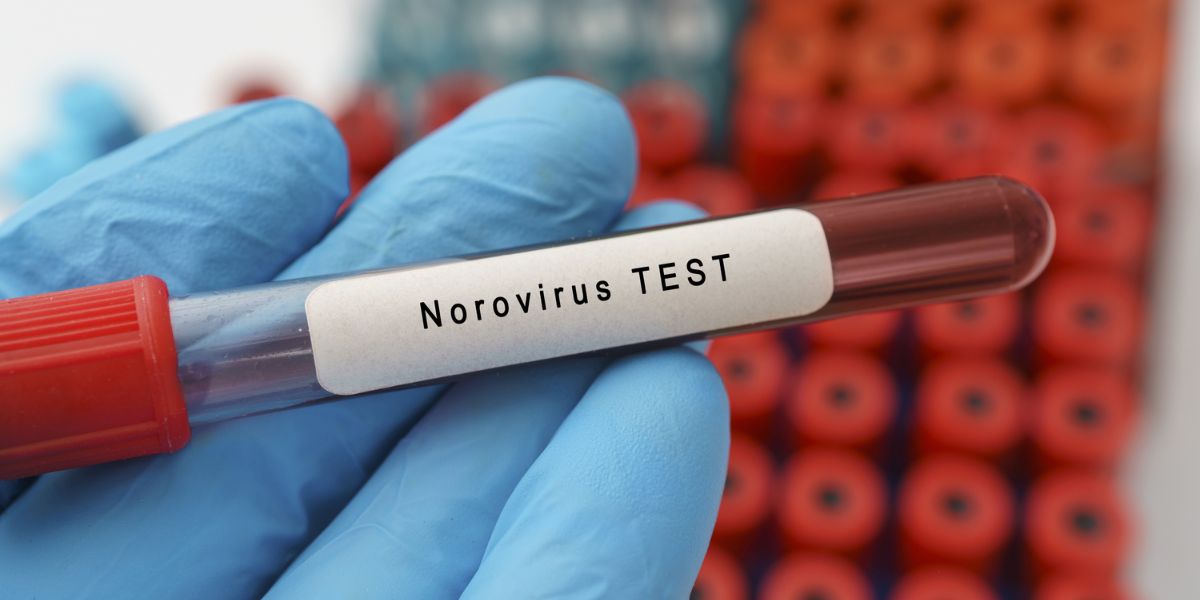The sick apple is it.
New York City Department of Health statistics shows that the number of norovirus infections soared an alarming 159% this month compared to the same period last year. Flu cases have also increased by over 25% so far in 2025.
In contrast to 488 instances in December 2023, 1,264 cases of norovirus were reported in Gotham last month.
According to the data, the number of norovirus infections increased by 30% in the first two weeks of 2025. As of January 11th, there were 343 cases, up from 263 in the same period last year.
No one gets tested for norovirus, thus the real number of cases is “likely much higher” than what clinical laboratories indicate, according to a representative from the DOH.
Typically, the bug—also called the stomach flu—causes diarrhea and vomiting, but in extremely rare instances, it can even cause death. The best way to prevent spreading a sickness, according to experts, is to stay home and wash your hands frequently.
At the same time, the five boroughs are seeing an increase in flu cases.
Statistics show that the number of confirmed cases of influenza in New York City increased by 23% so far this year, with about 15,000 people testing positive in the week ending January 11. This is a 10% rise from the previous week.
Since the start of flu season in October, the number of pediatric deaths attributed to the virus has decreased to one, down from three at the same stage last year, as reported by the agency.
In adults, the city does not record fatalities caused by the flu or norovirus.
New York City is experiencing a significant surge in flu and norovirus cases, prompting public health officials to issue urgent warnings. Hospitals and clinics are overwhelmed with patients, and experts caution that the true number of cases is likely much higher than the reported figures. This surge is especially concerning as it comes during the height of the winter season, with more people gathering indoors and a higher likelihood of both viruses spreading rapidly.
A Sharp Increase in Flu and Norovirus Cases
In recent weeks, both the flu and norovirus have seen a sharp uptick in reported cases across the five boroughs. Flu-related hospitalizations have risen, and emergency rooms are increasingly filled with patients showing flu-like symptoms. Simultaneously, norovirus, known for causing gastrointestinal symptoms such as vomiting, diarrhea, and stomach cramps, is spreading in community settings, including schools, nursing homes, and restaurants.
As of the latest data from the NYC Department of Health, thousands of flu cases have been confirmed, and norovirus outbreaks are being reported in various locations. However, public health experts are quick to point out that these numbers likely underrepresent the full scope of the problem.
Why the True Numbers Are Likely Much Higher

Public health experts believe that the actual number of flu and norovirus cases is significantly higher than the reported figures due to several factors:
- Mild or Unreported Cases: Many people who contract the flu or norovirus may experience mild symptoms and recover at home without seeking medical care. As a result, these individuals are not included in official case counts.
- Self-Diagnosis and Home Testing: With the availability of home testing kits for both the flu and COVID-19, many individuals are opting to self-test rather than visit a doctor or clinic. However, these tests often go unreported, leading to a gap in the official data.
- Overburdened Healthcare System: Hospitals and urgent care centers are already under strain due to the rise in flu and norovirus cases. As a result, healthcare providers may be diagnosing and treating patients without conducting extensive testing or reporting every case to health authorities.
- Unreported Norovirus Outbreaks: Norovirus is highly contagious and often causes outbreaks in places where people gather in close proximity, such as schools and nursing homes. Many of these outbreaks go unreported, especially when symptoms are mild, and people do not seek medical care.
The Impact on NYC Healthcare
Bronx Grocery Stores See Surge in Shoppers Before Snowstorm Hits
The spike in flu and norovirus cases is putting significant pressure on New York City’s healthcare system. Hospitals are reporting an increase in flu-related admissions, particularly among young children, the elderly, and those with underlying health conditions. Emergency rooms are also seeing a rise in patients with gastrointestinal issues linked to norovirus, leading to overcrowding and long wait times.
Dr. Mary Bassett, New York City’s Health Commissioner, stressed that although the number of confirmed cases is concerning, the city’s hospitals and healthcare providers are doing everything they can to manage the influx of patients. “We are concerned that many people with mild symptoms are not being tested or seeking care,” she said. “This means we could be underestimating the true impact of these outbreaks.”
Symptoms to Watch For
Both the flu and norovirus share some common symptoms, making it difficult to distinguish between the two without testing. However, they also have unique characteristics that can help individuals identify which virus they may have contracted:
- Flu Symptoms:
- Fever or chills
- Body aches and fatigue
- Sore throat
- Cough
- Congestion and runny nose
- Headaches
- Norovirus Symptoms:
- Nausea and vomiting
- Diarrhea
- Stomach cramps and discomfort
- Low-grade fever (in some cases)
It’s important to note that while the flu can be more serious and lead to complications such as pneumonia, norovirus is extremely contagious and can cause dehydration, especially in young children and older adults.
Preventative Measures
Public health experts are urging residents to take extra precautions to avoid contracting or spreading both the flu and norovirus. Here are some key recommendations:
- Get Vaccinated: The flu vaccine remains the most effective way to protect yourself from influenza. Health officials recommend that everyone six months and older get the flu shot, especially those at higher risk for complications, including young children, the elderly, and those with chronic health conditions.
- Practice Good Hygiene: Wash your hands frequently with soap and water for at least 20 seconds. Use hand sanitizer if soap and water are not available. Avoid touching your face, especially your eyes, nose, and mouth.
- Stay Home if Sick: If you experience flu or norovirus symptoms, it’s important to stay home to prevent spreading the virus to others. Rest, hydrate, and avoid public spaces until you’re feeling better.
- Disinfect Surfaces: Both viruses can spread through contact with contaminated surfaces. Clean and disinfect commonly touched areas like doorknobs, light switches, and countertops, especially if someone in your home is sick.
- Practice Respiratory Etiquette: Cover your mouth and nose with a tissue or the inside of your elbow when coughing or sneezing. Dispose of tissues immediately and wash your hands afterward.
As the flu and norovirus outbreaks continue to spread, health officials are closely monitoring the situation and advising the public to stay vigilant. New York City is actively working to contain the outbreaks and ensure that healthcare facilities are prepared for the increase in cases.
While the official numbers of flu and norovirus cases are concerning, experts believe the true scope of the situation may be much larger. It’s important for residents to take preventive measures, stay informed, and seek medical attention if they experience severe symptoms.
As we move further into the winter season, the combination of flu, norovirus, and COVID-19 can create a challenging environment for both residents and healthcare providers. By taking steps to protect ourselves and others, we can help minimize the spread of these viruses and ease the burden on our healthcare system.



